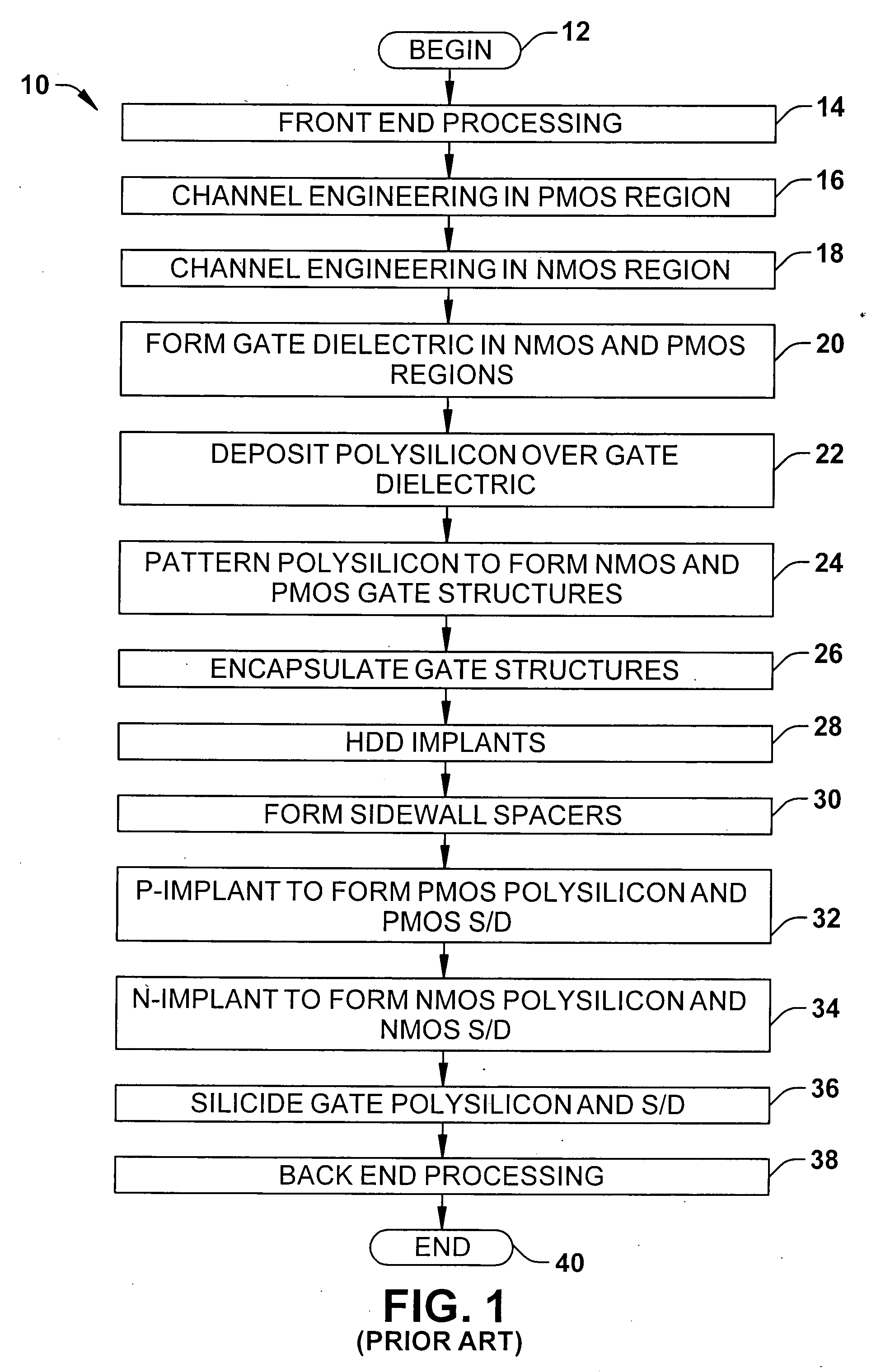Lanthanide series metal implant to control work function of metal gate electrodes
a technology of metal gate electrodes and metal implants, which is applied in the direction of semiconductor/solid-state device manufacturing, basic electric elements, electric apparatus, etc., can solve the problems of gate leakage current tunneling through, limited ability to form very thin oxide films with uniform thickness, and physical limitations on the extent to which siosub>2 /sub>gate dielectrics can be made thinner
- Summary
- Abstract
- Description
- Claims
- Application Information
AI Technical Summary
Benefits of technology
Problems solved by technology
Method used
Image
Examples
Embodiment Construction
[0024]One or more implementations of the present invention will now be described with reference to the attached drawings, wherein like reference numerals are used to refer to like elements throughout, and wherein the illustrated structures are not necessarily drawn to scale. The invention relates to metal gate CMOS devices and fabrication methods. The invention may be employed to simplify channel engineering steps in particular, and fabrication processing generally, while mitigating or eliminating the capacitance depletion shortcomings of conventional CMOS devices.
[0025]In the methods and devices of the invention, metal nitride is formed above a gate dielectric in the NMOS and PMOS regions, wherein these and the gate dielectric may be formed by separate processes for the NMOS and PMOS regions. As used herein, metal nitrides are any materials comprising metal and nitrogen content, including but not limited to metal nitrides, metal silicon nitrides, metal aluminum nitrides, and metal ...
PUM
 Login to View More
Login to View More Abstract
Description
Claims
Application Information
 Login to View More
Login to View More - Generate Ideas
- Intellectual Property
- Life Sciences
- Materials
- Tech Scout
- Unparalleled Data Quality
- Higher Quality Content
- 60% Fewer Hallucinations
Browse by: Latest US Patents, China's latest patents, Technical Efficacy Thesaurus, Application Domain, Technology Topic, Popular Technical Reports.
© 2025 PatSnap. All rights reserved.Legal|Privacy policy|Modern Slavery Act Transparency Statement|Sitemap|About US| Contact US: help@patsnap.com



